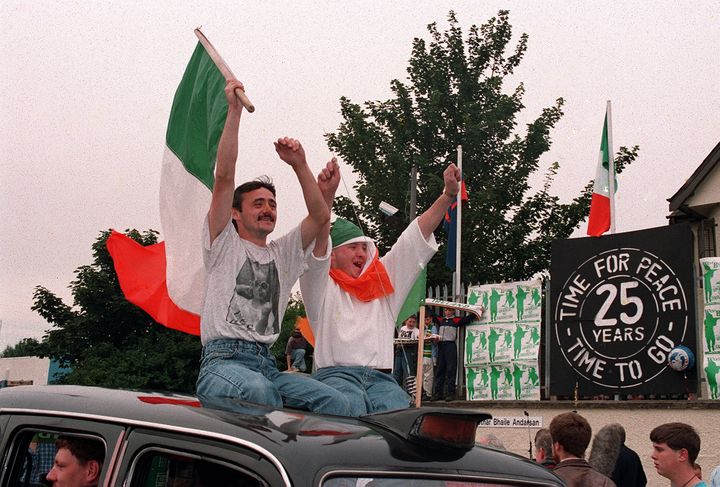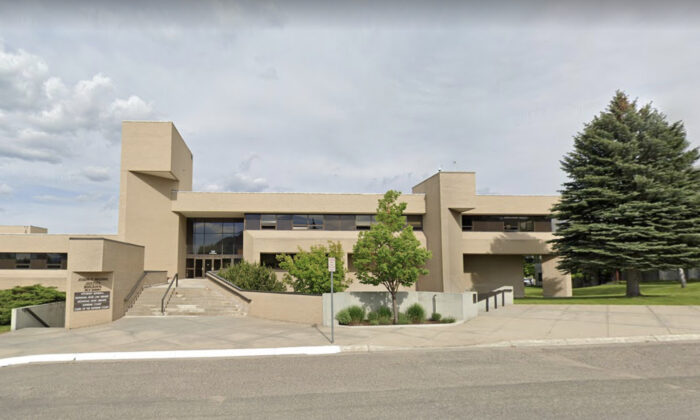
Celebrations after the IRA ceasefire in 1994. Credit: Pacemaker Three decades ago, we were resigned to the relentlessly cruel cycle of violence we called the Troubles. Generations appeared to be cursed to live with a maelstrom of murder, sectarianism and hopelessness.
The carnage bred cynicism and defeat. Some tireless people tried to make themselves heard above the violent din, but as Seamus Heaney noted: “The ‘voice of sanity’ was getting hoarse.” Looking back, one of the most significant stepping stones on the path to the peace we now enjoy was the calling of the IRA ceasefire on this day in 1994.

We should be grateful that there are those today who grew up beyond the shadows of bombings, machine-gun posts, barbed wire and barricades. We should be equally appreciative of the fact that there were sufficiently brave and committed people with the vision to assert that agreement and democracy were the only blocks on which a secure future could be built. Perhaps even more important still is to remember the thousands of lives stolen and the loss and pain of victims.
The reason the statement made on that day was historic was because it marked the “complete cessation of military operations”. The inclusion of the word “complete” was unprecedented. We must never forget the heartbreak of so many in getting to that point.
At Mr Reynolds’ shoulder was British prime minister John Major, and both played transformational parts The deaths of two little boys in March 1993 stand out as something of a catalyst in bringing the gunmen to their senses. Tim Parry (12) and three-year-old Jonathan Ball died, and 54 others were injured, when two IRA bombs hidden inside litter bins exploded in Warrington, north-west England. Tim’s father, Colin, recalled the atrocity some months back, saying: “I don’t need to be a time traveller, I can go back to that day, the moment when we heard there’d been a bomb.
For a while we thought he might live, but of course that wasn’t to be.” The deaths of the boys could have drained the nascent peace process of its flagging energy, but, thankfully, it did not. By the time of the IRA’s announcement, all involved in the talks were exhausted, but they carried on.
One of those who persevered was then taoiseach Albert Reynolds. His 10th anniversary was marked just over a week ago. It was he, along with the late Fr Alec Reid, who steadfastly refused to give up.
At Mr Reynolds’ shoulder was then British prime minister John Major, and both played transformational parts. Their work was expertly taken up by Bertie Ahern and Tony Blair, who to their great credit got it over the line four years later with the Good Friday Agreement. Much later, John Hume would say: “I want to see Ireland as an example to men and women everywhere of what can be achieved by living for ideals, rather than fighting for them.
” The talking is far from over, but, hopefully, the fighting finally is. Join the Irish Independent WhatsApp channel Stay up to date with all the latest news.














